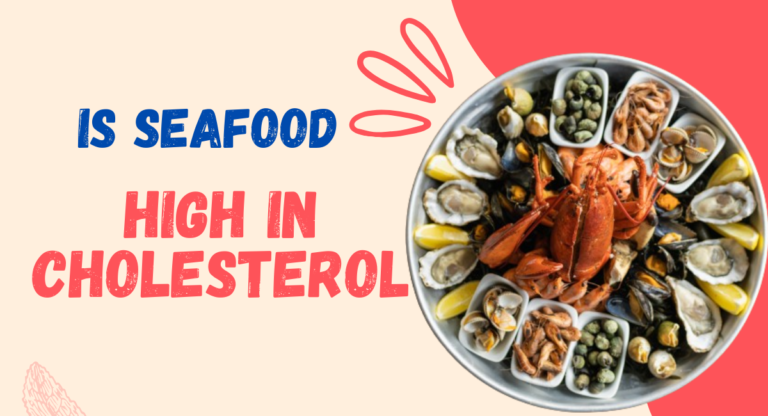Do People Eat Seahorses? Unveiling the Unexpected Delicacy
Seahorses, attractive creatures, have attracted people worldwide. These unique fish are known for their unusual appearance and behavior, which has led to culinary curiosities. The question do people eat seahorses? May seem like an unreal inquiry. However, as we venture into the kingdoms of unlike dining habits, by explore the facts and myths surrounding this marine creature.
In this article, we will dive into the cultural, religious, ethical considerations, and the science behind the age-old practice of consuming these charming sea creatures. By the end of our exploration, you’ll have a clearer understanding of whether seahorses are designed for your plate or if their charm is best left untouched in the ocean. So, let’s embark on this aquatic gastronomic adventure together!

What Are Seahorses?
Before we dive into the topic of whether people eat seahorses, let’s first take a closer look at what seahorses actually are. These small fish, belonging to the Syngnathidae family alongside pipefish and sea dragons, inhabit shallow tropical and temperate waters globally, often in seagrass beds or coral reefs. Seahorses are unique in their appearance, with a horse-like head, curved body, and long snouts for sucking up food.
Some Interesting Facts About Seahorses
- Seahorses are one of the only species where the males give birth. Females deposit eggs into a pouch on the male’s belly, where they’re fertilized and carried until hatching.
- No two seahorses have the same pattern of crowns, also known as coronets. These coronets are as unique as human fingerprints.
- They have exceptional eyesight with their eyes capable of moving independently. Their unique ability to look forward and backward simultaneously sets them apart.
- They are not great swimmers. They rely on their dorsal fin, which flutters up to 35 times per second, for propulsion, and use their pectoral fins to steer.
- Seahorses are monogamous and mate for life. They perform a unique dance and intertwine their tails to stay together when they travel.
Cultural Significance of Seahorses
Seahorses have historical significance in various cultures. Indigenous communities honored these creatures for their unique attributes. Today, they continue to hold a mystical attraction worldwide.
Overview of Seahorses in Various Cultures
Ancient Greeks and Romans saw them as symbols of strength, while in Chinese culture, they represent good luck, fortune, and fidelity. Many Asian cultures also believe that seahorses bring healing properties.
Historical Usage of Seahorses as Food and Medicine
Traditional Chinese medicine utilized seahorses for ailments like asthma, arthritis, and impotence. They are typically dried, ground into powder, and used in various treatments. Some believe that consuming seahorses can cure ailments like kidney disorders. In some cultures, seahorses were consumed as a delicacy or used in traditional dishes for their supposed health benefits. However, overexploitation of seahorse populations has led to a decline in their numbers and now they are protected under international trade regulations.
Are Seahorses Considered Food? | Who Eat Seahorses
In some parts of the world, particularly in Asia, seahorses were once part of people’s diet. They were perceived as a source of nutrition and even thought to hold medicinal properties. However, the consumption of seahorses as food today is not widespread. Most countries respect international trade laws that protect seahorses, due to their dwindling population. It’s important to note that the eating of seahorses is not a common practice and is generally discouraged due to conservation concerns.
How Are Seahorses Harvested For Food?
In countries where seahorses are considered food, they are often harvested through the fishing industry. However, unlike other fish that are caught through nets or lines, seahorses are typically caught by hand. This is because they have a very delicate body structure and can easily be damaged by traditional fishing methods. Harvesting seahorses also requires specific knowledge and skills, as they are known to camouflage themselves and blend in with their surroundings.
Discover more about the fascinating topic of whether you can eat a starfish on our dedicated post.
Are Seahorses Dangerous to Humans?
Seahorses, despite their unusual appearance, pose no direct threat to humans. They lack the sharp teeth, toxic stingers, or venomous spines that are common defense mechanisms in other sea creatures. Their hard, bony plates serve as protective armor against predators. It’s also important to note that seahorses are not aggressive species and would rather camouflage or swim away than confront a potential threat. However, as with all marine life, care should be taken when handling seahorses to avoid causing them stress or harm. Observing these creatures in their natural habitat without interference is ideal. Remember, while seahorses are not unsafe for humans, human actions can be unsafe for seahorses, contributing to their declining numbers. Thus, it’s crucial to promote their conservation and protection.
Are Lined Seahorses Venomous?
Lined seahorses, known scientifically as Hippocampus erectus, are not venomous. They don’t pose threats to humans or other marine species through venom or toxins. Their main defense mechanism is their ability to blend with their surroundings, making them hard to spot for potential predators. They also have a tough, bony exoskeleton that provides some protection. However, like all marine creatures, they should be handled with care to prevent stress or harm. Despite their harmlessness to humans, respecting their role in the ecosystem is crucial for conservation.
Are Seahorses Poisonous to Eat?
While seahorses have a history of being consumed, it’s important to consider their potential risks. A common question arises: “Are seahorses poisonous to eat?” Contrary to certain rumors, seahorses are not inherently poisonous. However, like any seafood, if not prepared or stored properly, they can harbor harmful bacteria or toxins. Furthermore, due to their diet, seahorses can accumulate toxins like heavy metals from their environment. These factors underline the need for caution when considering seahorses as food. It’s also vital to remember the ecological impact of seahorse consumption, given their decreasing populations and protective regulations.
Religious Status of Eating Seahorses
Religion plays a crucial role in dictating dietary habits for many individuals. Let’s delve into the status of seahorses in two major dietary laws: Halal and Kosher.
Is Seahorse Halal?
Halal is a term in Islamic law that stands for ‘permissible’. For a food item to be Halal, adherence to Quranic dietary laws is essential. According to these rules, all sea creatures are Halal, but some scholars argue that only fish with scales are permissible.
Reasons for Halal: The seahorses are sea creatures and live in the sea. Based on maktabahalbakri, seahorse are halal, as they fall under the category of sea creatures mentioned in the Quran and Sunnah. So, the consumption of seahorses aligns with Islamic dietary laws.
Reasons against Halal: Some scholars believe that only fish with scales are allowed under Halal laws. Since seahorses do not have scales but bony plates instead, they may be deemed as non-Halal by these interpretations.
Are Seahorses Kosher?
In Jewish dietary law or Kosher, certain criteria must be met for sea creatures to be deemed edible. The creature must be a fish, possess fins, and have scales that are easy to remove. Since seahorses neither have fins nor scales, they are not considered Kosher. Hence, their consumption is not permitted under Jewish dietary law.
Nutritional Value of Seahorses
Seahorses, despite their unusual inclusion in the food chain, might be packed with significant nutrients. They have been reported to contain proteins, fats, and other essential elements. Let’s explore their nutritional composition, potential health benefits, and risks.
Analysis of Nutritional Composition
Seahorses are rich in protein, which is vital for body repair and growth. They also contain fats, necessary for energy storage and hormone production. Seahorses house minerals like calcium and phosphorus, crucial for bone health. The presence of omega-3 fatty acids in seahorses might contribute to cardiovascular health.
Potential Health Benefits and Risks
Consumption of seahorses might bring certain health benefits due to their rich nutritional composition. Their protein content can aid muscle growth and repair, while minerals like calcium and phosphorus can help maintain strong bones. The omega-3 fatty acids might promote heart health.
However, the health risks associated with seahorse consumption should not be overlooked. As seahorses can accumulate toxins like heavy metals from their environment, consuming them could expose one to potential health hazards. Therefore, despite their nutritional benefits, the risks associated with consuming seahorses, along with their ecological importance and protective regulations, make it advisable to refrain from their consumption.
Is Seahorse Edible? | Do People Eat Seahorses
Technically, seahorse meat is edible and was even a part of the diet in certain Asian cultures. If prepared and stored correctly, seahorses are not toxic or harmful if consumed. However, it’s crucial to understand that eating seahorse meat is not recommended due to ethical and conservation reasons. These unique creatures are facing population decline due to excessive harvesting for various purposes, including as food. Hence, while seahorses can be eaten, it is discouraged to do so in order to protect these fascinating creatures and help conserve biodiversity in our oceans.
What Does Seahorse Taste Like?
Seahorses, while not a common item in most diets, have been described as having a unique flavor profile. They are often compared to herbal medicines in taste, given their historical usage in traditional Chinese medicine. Some people report a taste akin to shellfish, specifically a mild, slightly sweet flavor with an underlying hint of bitterness. Others may find the taste unpalatable due to the strong, medicinal aftertaste. In terms of texture, seahorses are often dried before consumption, resulting in a crunchy consistency. Despite these descriptions, it is essential to note that seahorse consumption is not widespread and remains limited due to ethical and environmental considerations, as well as potential health risks.
Regulations and Conservation
The trade of seahorses has attracted international and national attention due to the rapid decline in their populations. This has led to the development of various laws and regulations to guide their trade and promote conservation.
International and National Laws on Seahorse Trade
Internationally, CITES includes seahorses in Appendix II, requiring careful trade regulation for their survival. Countries participating in CITES are required to provide export permits for seahorses, verifying that their trade won’t harm wild populations. National laws vary. For instance, in the US, seahorses are protected under the Endangered Species Act, making their trade illegal without special permits.
Conservation Efforts for Seahorses
Conservation efforts for seahorses are widely undertaken by various organizations globally. These initiatives focus on research, education, and policy development. For instance, Project Seahorse, a marine conservation group, conducts extensive research on seahorses and their habitats, and works towards sustainable marine ecosystems. They also advocate for stricter trade controls and the establishment of marine protected areas. Public awareness campaigns are crucial for seahorse conservation. These efforts play a vital role in ensuring the survival and well-being of seahorses, contributing to the overall biodiversity of our oceans.
Alternatives to Seahorses
While seahorses possess unique properties, alternatives like salmon and mackerel, rich in omega-3 fatty acids, offer similar heart health benefits without ethical and environmental concerns. Shellfish such as clams and oysters are high in protein and minerals, supporting body growth and bone health. For the unique flavor profile, certain medicinal herbs and roots used in traditional medicine can be explored as substitutes. Alternatives not only provide similar benefits but also support the conservation of seahorses by reducing demand for their consumption.
FAQ’s
Despite their nutritional benefits, seahorses can accumulate toxins from their environment, making them potentially unsafe to consume. Also, due to ethical and conservation reasons, their consumption is discouraged.
Seahorses have a unique flavor, often compared to herbal medicines. Some describe the taste as mild, and sweet with a bitter aftertaste, while others find it unpalatable due to a strong medicinal flavor.
The legality of consuming seahorses varies across different countries and regions. In some places, it is regulated or prohibited due to the potential impact on seahorse populations.
The trade of seahorses is regulated by international and national laws. They are included in the CITES Appendix II, indicating that their trade requires careful regulation. National laws vary; in the US, for example, seahorse trade is illegal without special permits.
Alternatives include fish like salmon and mackerel, rich in omega-3 fatty acids, and shellfish such as clams and oysters, high in protein and minerals. Certain medicinal herbs and roots can substitute for the unique flavor of seahorses. These options provide similar benefits while supporting seahorse conservation.
Conclusion
Seahorses captivate us with their beauty and uniqueness, but they are much more than interesting sea creatures. They are essential for preserving marine biodiversity. While it’s possible to consume them, it’s essential to consider the ethical, health, and conservation implications. The concerning decrease in their numbers from overharvesting demands urgent measures for protection and conservation. As responsible global citizens, it’s upon us to seek alternatives and reduce demand for seahorse consumption, supporting conservation efforts. Let’s work towards keeping these captivating creatures in their natural habitat – the ocean – contributing to the vibrant array of life beneath the waves.
Helpful Recourses
- https://www.scuba.com
- https://www.al-islam.org
- https://oceanjewelrystore.com
- https://navaboats.com
- http://bioweb.uwlax.edu






